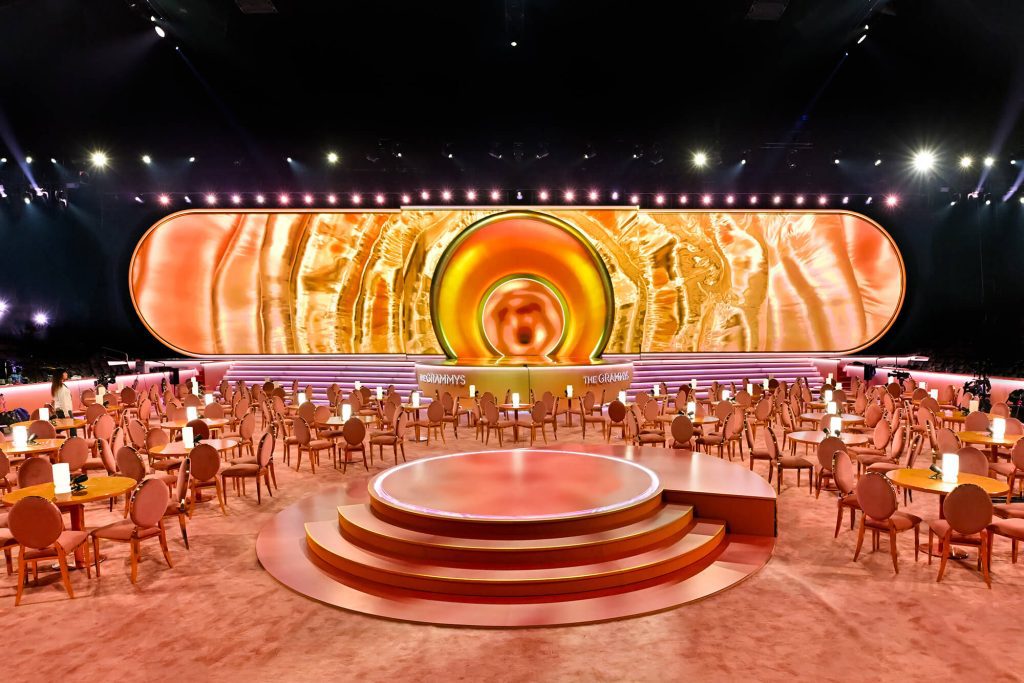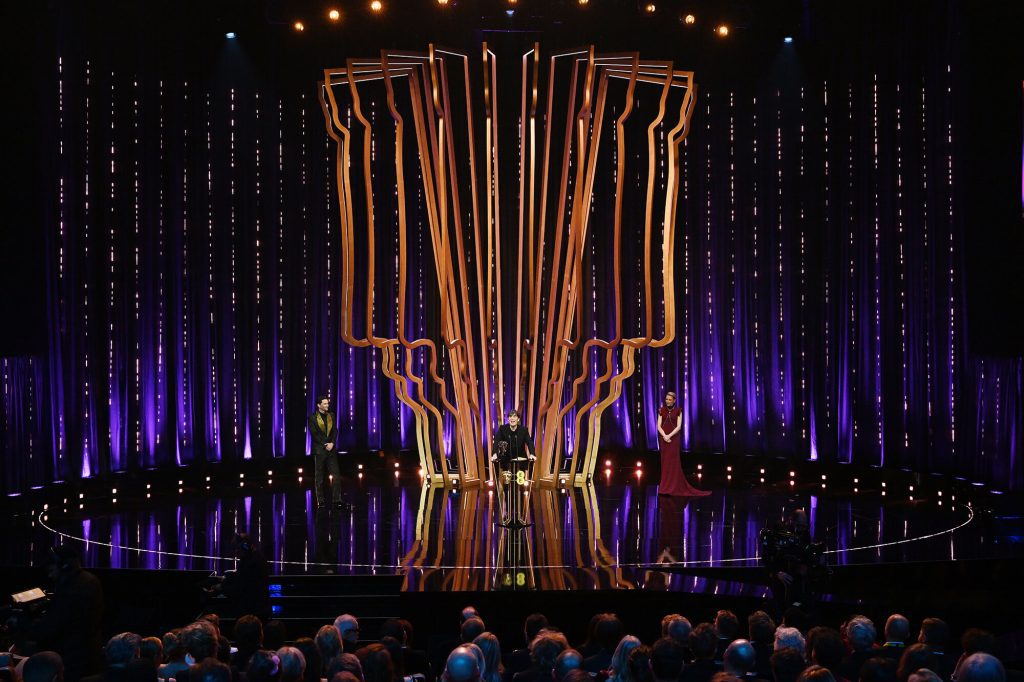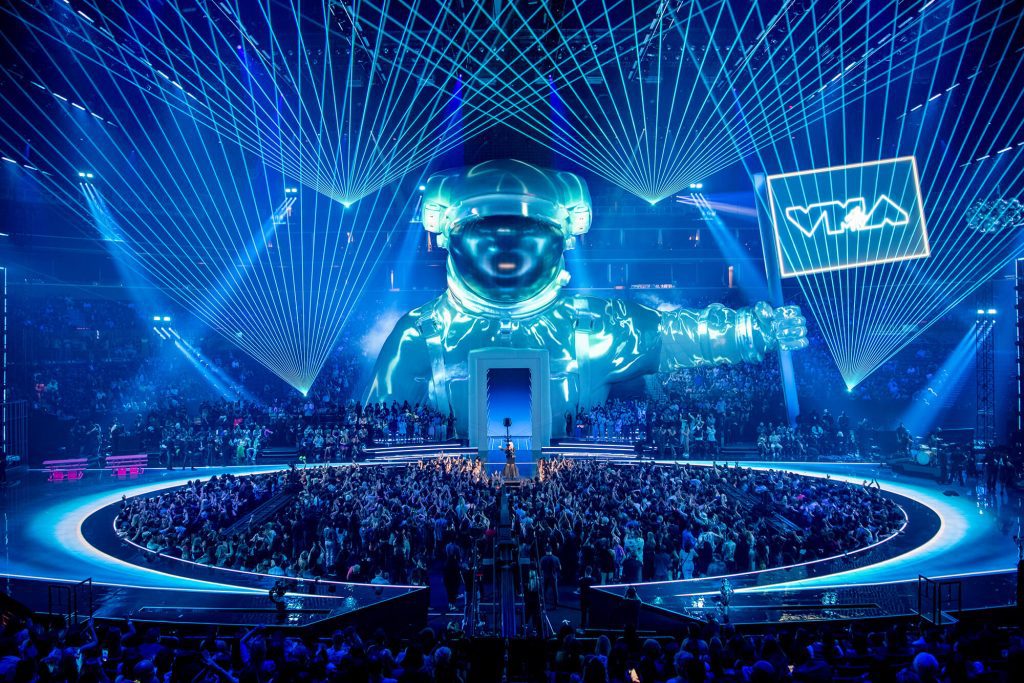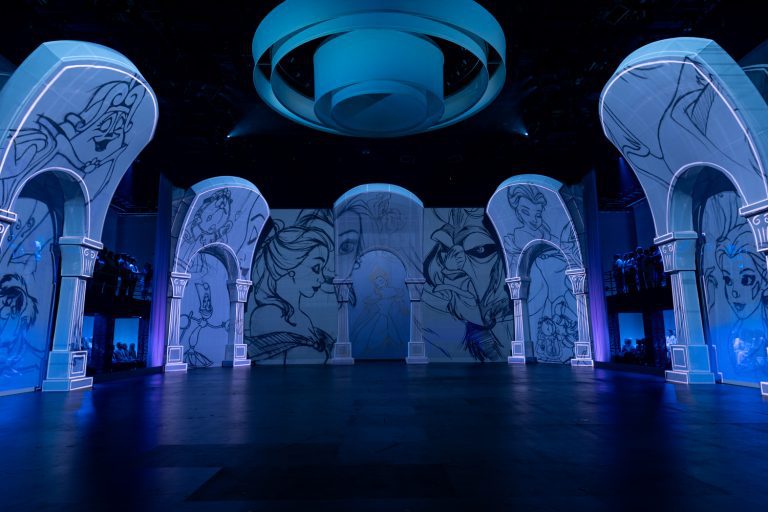
Photography by JULIANA BERNSTEIN

Courtesy of GETTY

Courtesy of VMAs
Julio Himede is not just a set designer; he’s a master of creating moments that resonate on a global scale. From the grand stages of the Grammy Awards to the immersive experiences of the BAFTAs, Himede’s work is defined by a minimalist philosophy that distils complex ideas into powerful visual statements.
h: Can you tell us about your journey into the world of set design and production? What inspired you to pursue this career?
Julio Himede: Well, I’ve always been interested in the visual arts. After finishing high school in Sydney, I applied to the National Institute of Dramatic Arts (NIDA) in Sydney and got accepted. NIDA is a bit like Juilliard or the Royal Academy in London – actors, designers, directors, and others in the industry study there. It’s a big drama design school, and I studied set and costume design in a three-year programme.
I was very fortunate to have amazing tutors and professionals from the industry who gave me my first job after graduating. One of my first jobs was designing for the Sydney 2000 Olympic Games, specifically for the opening and closing ceremonies. Working on such a large-scale event was an incredible experience. It wasn’t just about creating theatre in the round for the audience; it was also about designing for television, which was my first time considering broadcast beyond live theatre.
That experience set me on the path to a career in television production. Since then, I’ve done theatre, opera, exhibition design, and many music productions, but the Olympic Games really defined my future direction in broadcast events.
h: Your recent stage designs for the 2024 Grammy and BAFTA Awards have been widely acclaimed. Could you share the inspiration behind the iconic gramophone-themed stage at the Grammys and the animation-inspired setup at the BAFTAs?
JH: For the Grammys, there were a lot of discussions between our team, the producers, and the Recording Academy. We wanted to create a stage that stood out, especially in a world where video technology dominates. A lot of designers rely on video for live broadcast events, which allows for changing environments quickly. But we wanted something that was more identifiable and relatable, something that would stand out visually, even with all the video screens.
The inspiration came from the Grammys’ iconic symbol – the gramophone. We wanted to modernise and interpret the gramophone in a contemporary way that spoke to music, architecture, and the celebration of talent. So, we created this giant, circular tunnel-like entrance with several layers that artists could walk through, and it was framed by the gramophone design. This way, when artists won an award and walked on stage, they were framed by this iconic symbol. It elevated the whole experience, making it more elegant and sophisticated.
At the BAFTAs, we had a similar philosophy of creating a clean, identifiable concept that was also visually impactful. Both designs aimed to add elegance while staying true to the essence of each award show.
h: What is the core philosophy that drives your work at Yellow Studio, and how do you ensure it is reflected in every project you undertake?
JH: Our philosophy is minimalism and simplicity – what we call a ‘single brushstroke’ approach. By that, I mean we focus on one strong, symbolic idea that represents the entire design. We come up with many concepts when starting a project, but we always pare them back, peeling away unnecessary layers to avoid clutter and confusion. This helps us focus on the protagonists or the storyline our client wants to communicate.
We ask a lot of questions internally to ensure we’re keeping the concept clean and pure, making the design more impactful. The goal is always to represent meaning in the fewest elements possible, which is key to our minimalist approach.
h: Minimalism is being constantly reinvented, and trends shift rapidly. How do you and your studio define minimalism in your work?
JH: For us, minimalism is about having elements that carry significance and meaning. It’s very easy to clutter a design, just like you might overpower a living room when decorating. But if each element has meaning, it’s easier to make decisions on what to keep or remove.
We aim to resonate with the audience emotionally by ensuring that every part of the design means something. That’s the key to our approach.
h: What trends do you see emerging in stage and production design in the coming years?
JH: One of the big trends is immersiveness. While it’s not new, it’s becoming more and more apparent. Clients want to create experiences that are relatable and immersive, especially in a world where audiences are constantly distracted by social media and technology. Engaging the audience, whether in the room or globally through a broadcast, is a challenge that’s only increasing.
For example, we’re always exploring how to bring the audience closer to the artist, even through a screen. Capturing the emotions of the audience and sharing those emotions with viewers at home creates a connection. If you’re watching live on TikTok, for instance, and you see the crowd’s reactions, it brings you closer to the experience, even though you’re not physically there.

